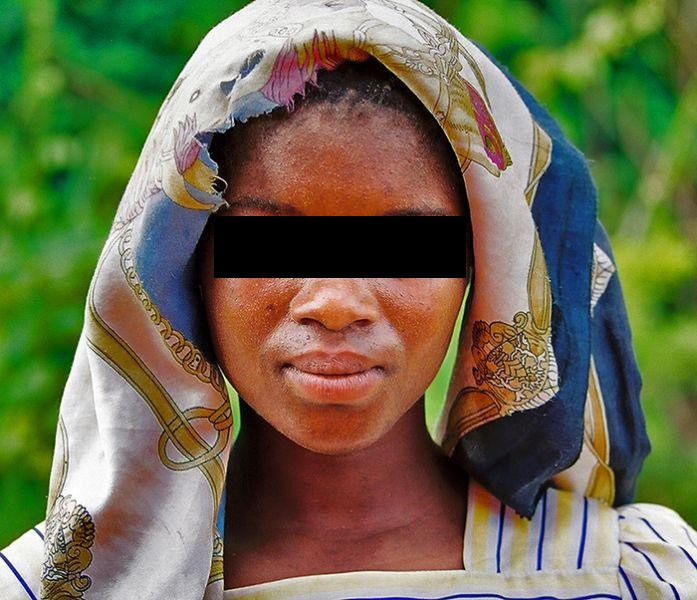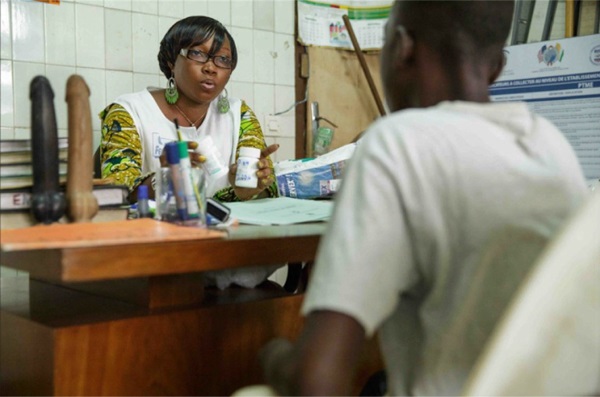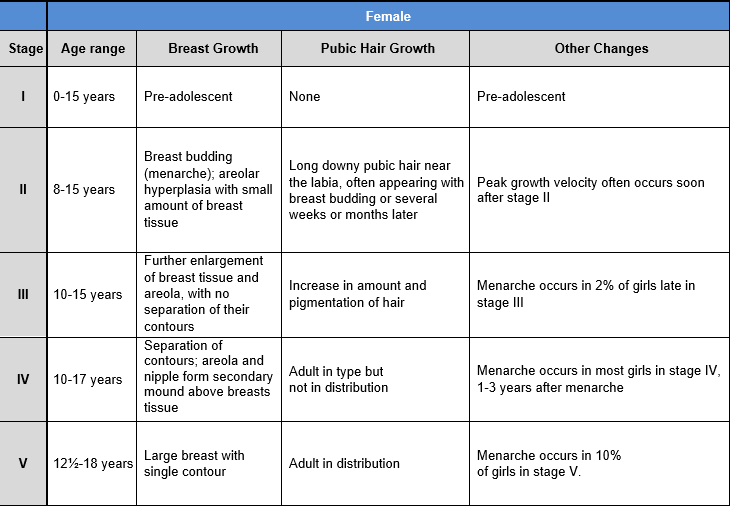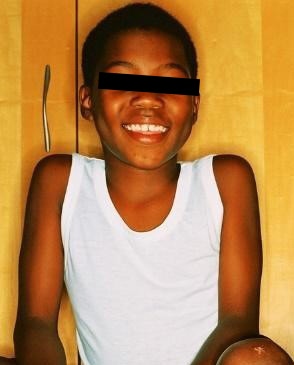Session 10: ART Initiation
Starting Adolescents on ART
In this session, we will discuss the benefits of Antiretroviral therapy, how to assess client readiness for ART in various populations, the appropriate ART regimen and dosage, and effective adherence support interventions and strategies for supporting adherence to ART.
Learning Objectives
By the end of this session, you will be able to:
- Explain eligibility criteria for starting ART in adolescents.
- Describe the ART regimen and dosage for adolescents.
Learning Activities
-
Introduction to Starting Adolescents on ART (5 min)

Rufaro, a mature orphan, is 15 years old. She is HIV-positive and lives with 2 siblings: one is negative and the other is positive and on treatment. They attend school and live in the same hut together, which has one room for sleeping, cooking and eating. The roof is leaking. The clinic and school are 12 km away. They do not have electricity or water; they get their water from a borehole 2 km away. Firewood is scarce, so they use cow dung for fuel, which they collect on the way to and from school. Whenever possible the siblings attend church. Rufaro cares for her younger siblings. The one who is on ART has many health issues. Consequently, Rufaro misses a lot of school.

The scenario above is just one example of the many issues facing adolescents living with HIV. Your role as a health care worker is vital in supporting adolescents to test for HIV, initiate and adhere to treatment, manage their HIV through continuous engagement with care services, and ultimately to live a long and healthy life.
An adolescent is defined as a child between the age of 10 and 19 years. This period of life known as adolescence is accompanied by many physiological and psychological changes, which you as a health care worker will need to be aware of when managing this age group.
Adolescents may have few support structures at the very time of life when they are gaining independence from their families and exploring their emerging autonomy. As a result, health care workers are often among the few people adolescents are willing to talk with about their health and other significant life issues that they face.
The principles of therapy are similar to those in children and adults, but there are a number of specific issues that a health care worker must bear in mind when caring for adolescents, which includes staging and addressing their psychosocial needs, as well as stage of puberty.
Eligibility Criteria for Starting ART in Adolescents
The eligibility criteria for ART in adolescents:
Now “TREAT ALL” regardless of CD4 or clinical stage
ART is recommended for all individuals with HIV to reduce morbidity and mortality. Thus, ART is also recommended for ART-naïve adolescents. However, before initiation of therapy, adolescents’ readiness and ability to adhere to therapy within their psychosocial context need to be carefully considered as part of therapeutic decision making.
As you’ve learned in previous sessions, HIV-positive adolescents are at risk not only of the HIV-associated infections typically used to stage adults, but also of chronic, non-infective complications used to stage children. These include chronic lung disease, LIP (stage 3), HIV-associated cardiomyopathy/nephropathy, and stunting (stage 4).
-
ART Regimen and Dosage in Adolescents (5 min)
The age at which to start adult dosing can be difficult to determine in adolescents, as stunting and wasting are common.
- It is recommended that adolescents who weigh less than 25 kg should be dosed according to paediatiric dosing guidelines; therefore, all adolescents must be weighed prior to ART initiation.
- Most adolescents weighing above 25 kg can be initiated on the same regimen as adults with the exception of tenofovir (TDF), which should be given to adolescents in Tanner Stage IV or V. (see below for description of Tanner stage)
- Adolescents weighing above 35 kg can be given the following adult fixed dose combination:
Caution!
It is important to note that younger adolescents who have not yet reached puberty should be monitored for tenofovir toxicity.
Tanner Staging Method
The adolescent sexual maturity rating (SMR), also known as Tanner stage, can be helpful when considering ART initiation and determining the appropriate ART regimen. Dosage of ARV drugs should be prescribed according to the SMR and not solely on the basis of age. Tap the image below to view each table.
WHO. Antiretroviral Therapy for HIV Infection in Infants and Children: Towards Universal Access: Recommendations for a Public Health Approach: 2010 Revision. Annex H. Sexual Maturity Rating (Tanner Staging) in Adolescents, 2010. Available at www.ncbi.nlm.nih.gov/books/NBK138588/Tanner Staging Method - Female

Tanner Staging Method - Male

-
Tendai Part 1 (10 min)

Tendai is a 17-year-old HIV positive adolescent who has been on ART since he was 12. He loves to hang out with his friends, staying out late and socializing. He has been known to drink alcohol with his friends. Clinic staff have seen him drunk. One staff member who lives in the same village as Tendai knows that his family is worried about his drinking and behaviour. Tendai’s mother has told this health care worker that she does not know what to do with him—he has changed and is “hard to manage”.
When Tendai first started ART, he faced many challenges including serious gastrointestinal side effects, elevated liver enzymes, and mild to moderate sleep disturbances. These were managed by changing some of the medications in his regimen, monitoring his laboratory results, and providing medication to relieve the side effects he was experiencing.
His previous PC told you that over the past 2 years Tendai has become increasingly upset by having to come to the clinic. He has missed appointments and has been arguing with his mother about staying out with his friends and not doing well in school. There have been several times when Tendai came into clinic with flu-like symptoms as well as an outbreak of oral thrush, which was directly related to his poor adherence. His mother has come to the clinic to talk to the previous PC, but you have not met the mother yet. You have talked to Tendai twice, but only for a short time since he was in a rush to get home.
Tendai is in the clinic early this morning and tells you that he needs to see the nurse. When asked if he is having a particular problem, Tendai tells you that he is “having a burning sensation when he goes to the bathroom and just doesn’t feel good”. Tendai is seen by the nurse and returns to your office. He has been given a prescription for antibiotics to treat a urinary tract infection. He appears upset as he is talking to you. “I don’t understand how this happened. I’ve been careful and have sex only with my girlfriend. I wear a condom when I’m inside of her. Could this happen from her kissing me down there? My friends all told me that oral sex was safe and the best way to avoid getting a girl pregnant. Maybe it happened when I had too many beers and the condom went on wrong. The nurse told me I have to tell my girlfriend to come to clinic for medication. I’ll do that but she doesn’t know I am HIV positive and I can’t tell her that or she will leave me”.
It is not necessary for the nurse to join the counselling session with you at this point. If you are having difficulty talking to Tendai or specific questions about the STI diagnosis or treatment, then you can ask the clinic nurse to join if available. You should address critical clinical or psychosocial issues during the session. Asking Tendai to return with his girlfriend delays important client education and risks the chance that he will not return. Confronting an adolescent with an accusation of not telling the truth will potentially lead to a significant communication barrier and weaken the relationship between you and Tendai.
-
Knowledge Check (5 min)
-
Key Points (5 min)
- The age at which to start adult dosing can be difficult to determine in adolescents as stunting and wasting are common.
- Adolescents weighing 25 kg or more can be given adult formulations with the exception of Tenofovir which should be given to adolescents in Tanner stage IV or V.

